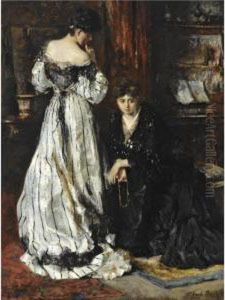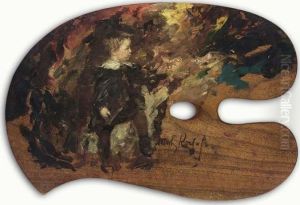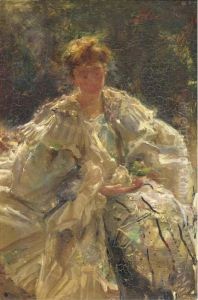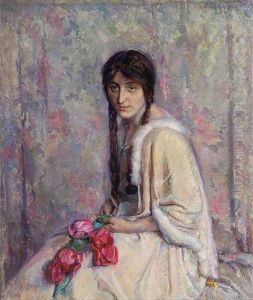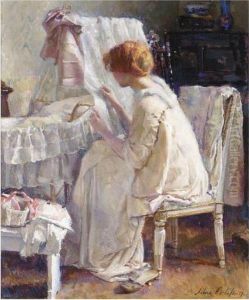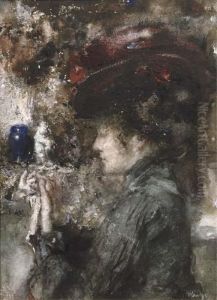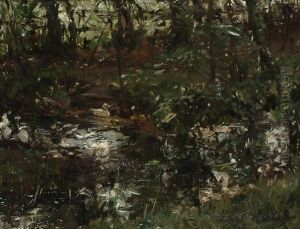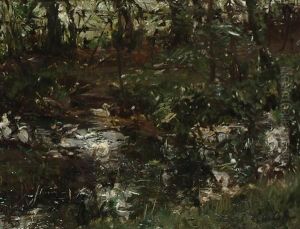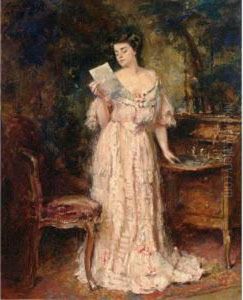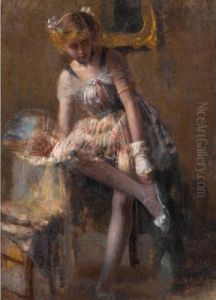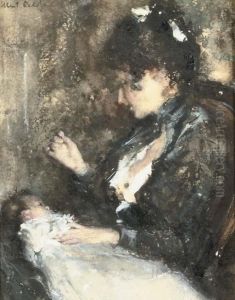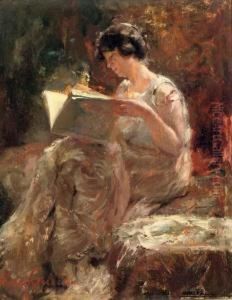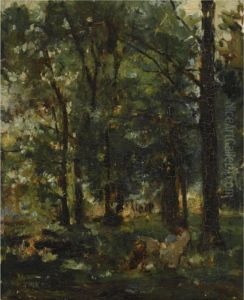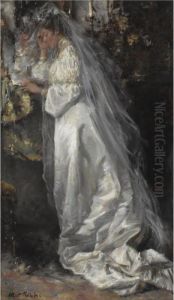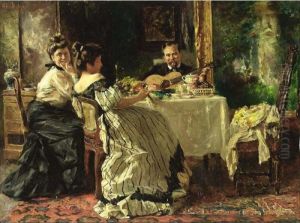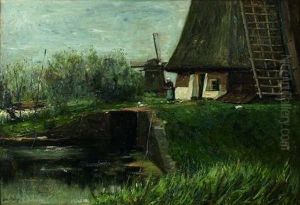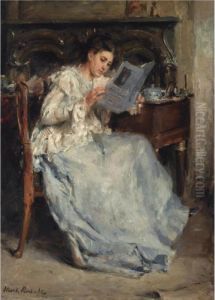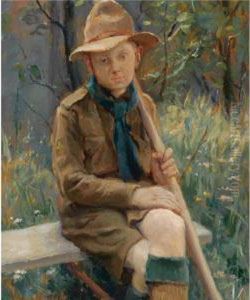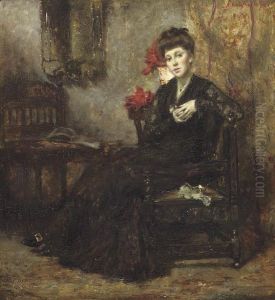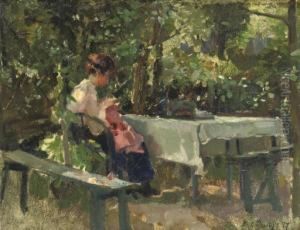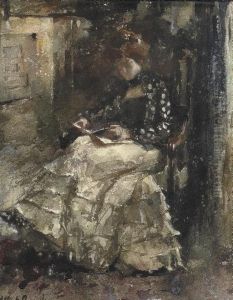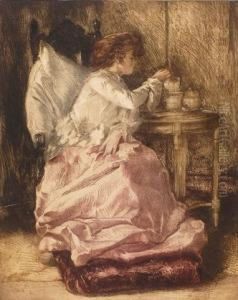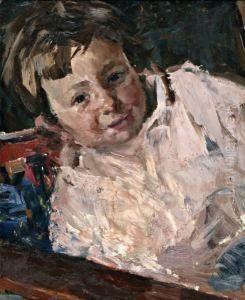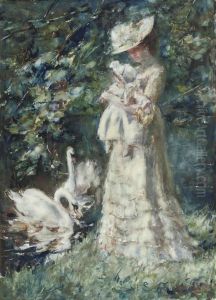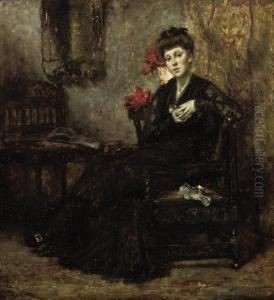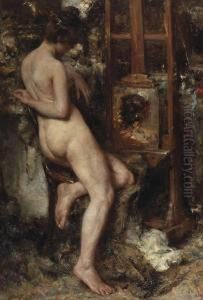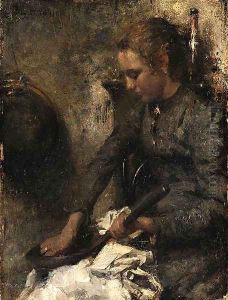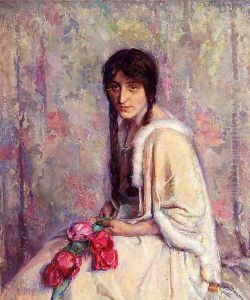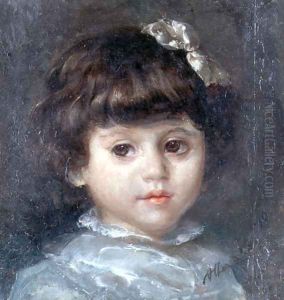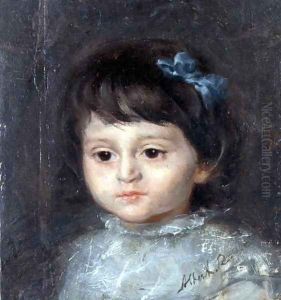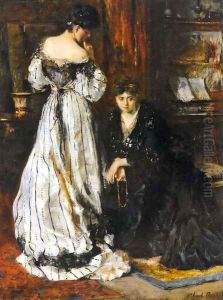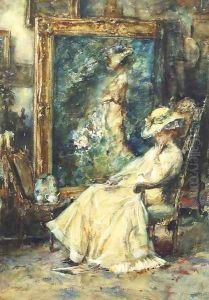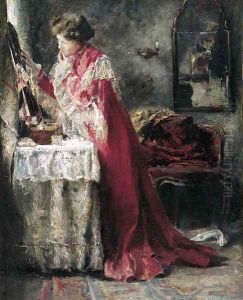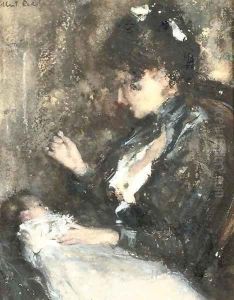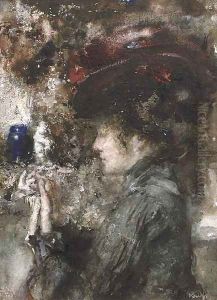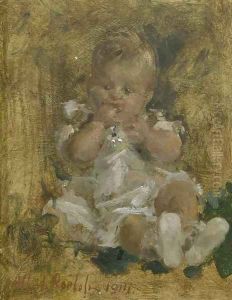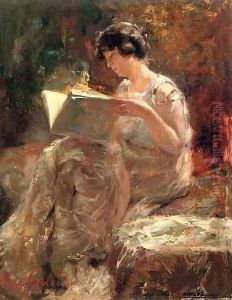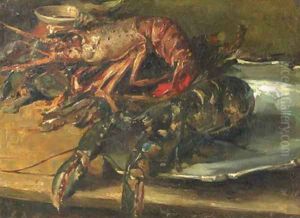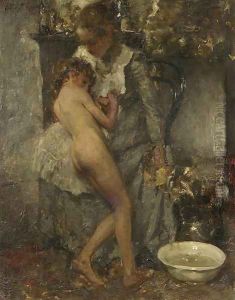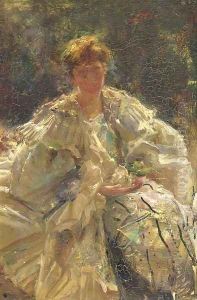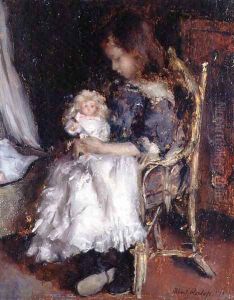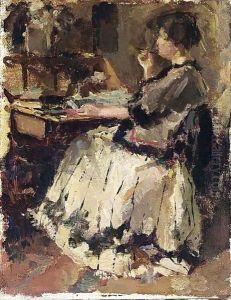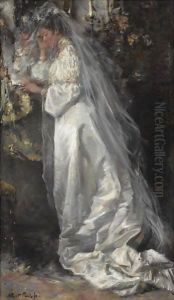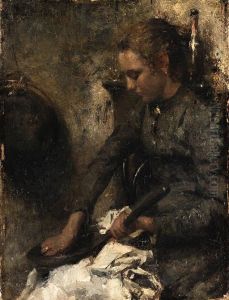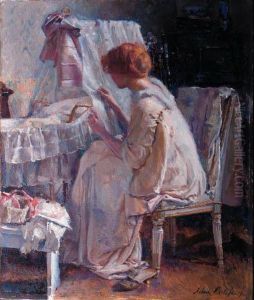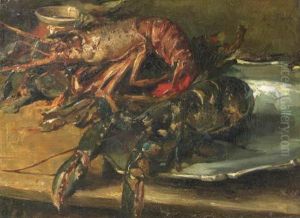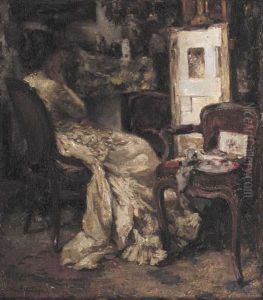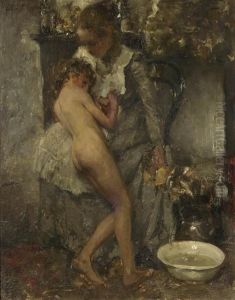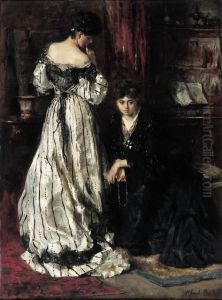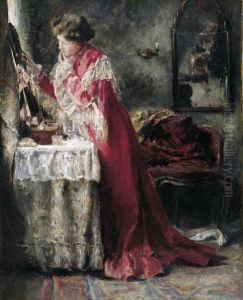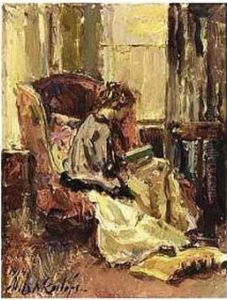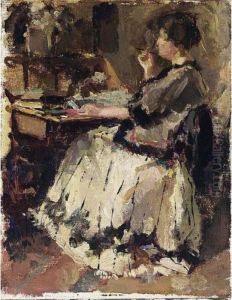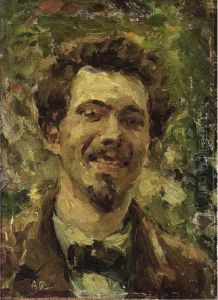Albert Roelofs Paintings
Albert Roelofs was a Dutch painter, born in The Hague, Netherlands, on March 5, 1877. He was the son of the well-known painter Willem Roelofs, who played a significant role in his son's artistic development. Albert was initially trained by his father and later studied at the Hague Academy of Art. His father's connections in the art world provided him with the opportunity to learn from other prominent artists of the time.
Albert Roelofs is best known for his portraits and intimate genre scenes. His work was heavily influenced by the Hague School, a group of artists who lived and worked in The Hague during the late 19th century. These artists, including his father, were known for their realistic depictions of everyday life and the Dutch countryside, often painted in a tonalist style with a restrained color palette.
Throughout his career, Roelofs exhibited a strong affinity for capturing the nuances of light and atmosphere, a trait that is evident in his landscapes and interior scenes. His paintings often evoke a sense of tranquility and are characterized by a skilled use of light, shadow, and a subtle color scheme that reflects the tonalist influences of his time.
Despite his relatively short life, Albert Roelofs made a significant contribution to Dutch art. He was active in various artists' societies, including 'Arti et Amicitiae' in Amsterdam, which furthered his exposure and reputation in the Dutch art scene. His works were exhibited in the Netherlands and abroad, gaining recognition and praise for their delicate execution and emotive quality.
Albert Roelofs passed away at the age of 43, on December 28, 1920, in The Hague. His legacy continued through his artworks, which remain on display in Dutch museums and collections, preserving the spirit of the Hague School and the artistic heritage of his family.
